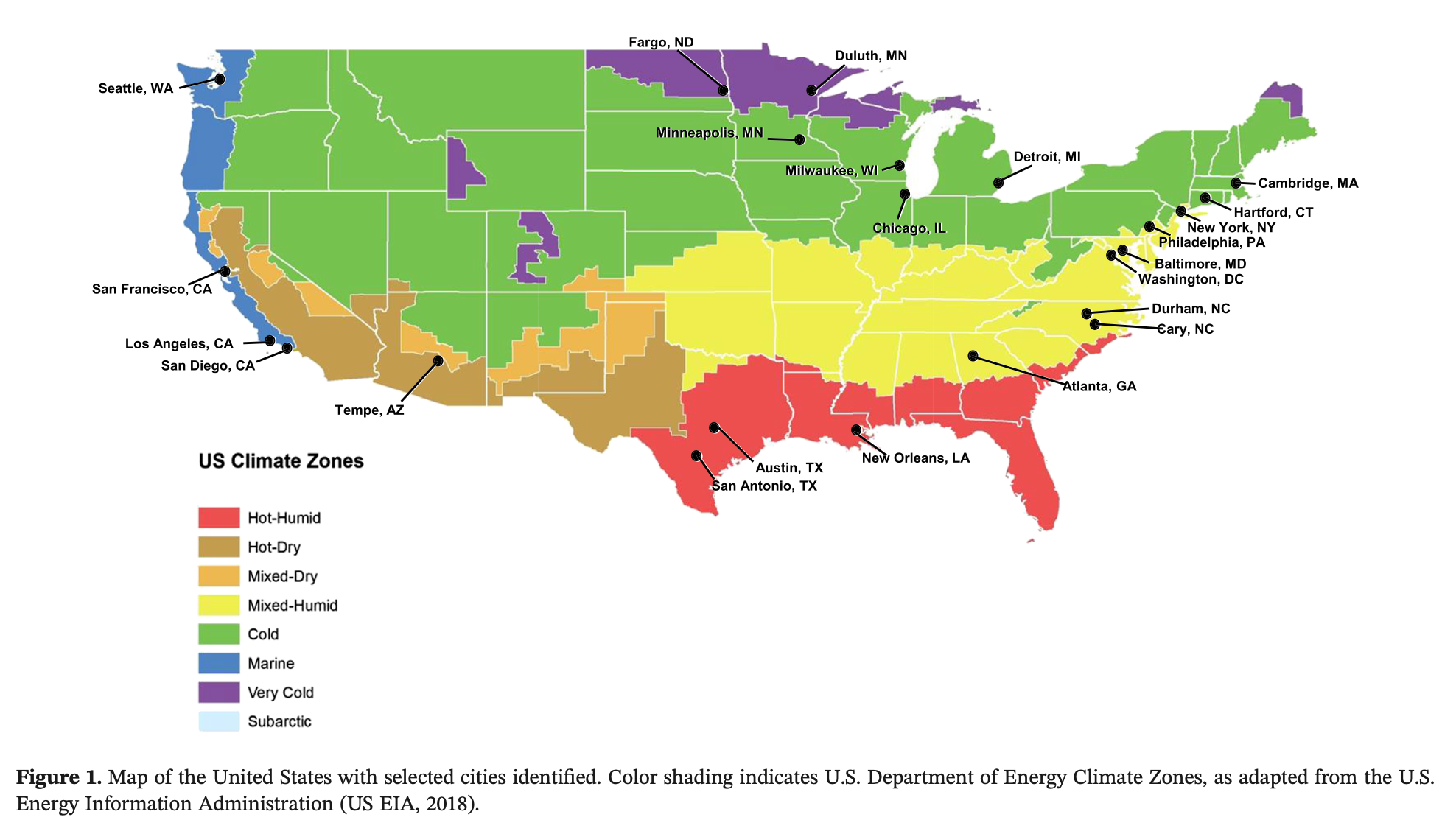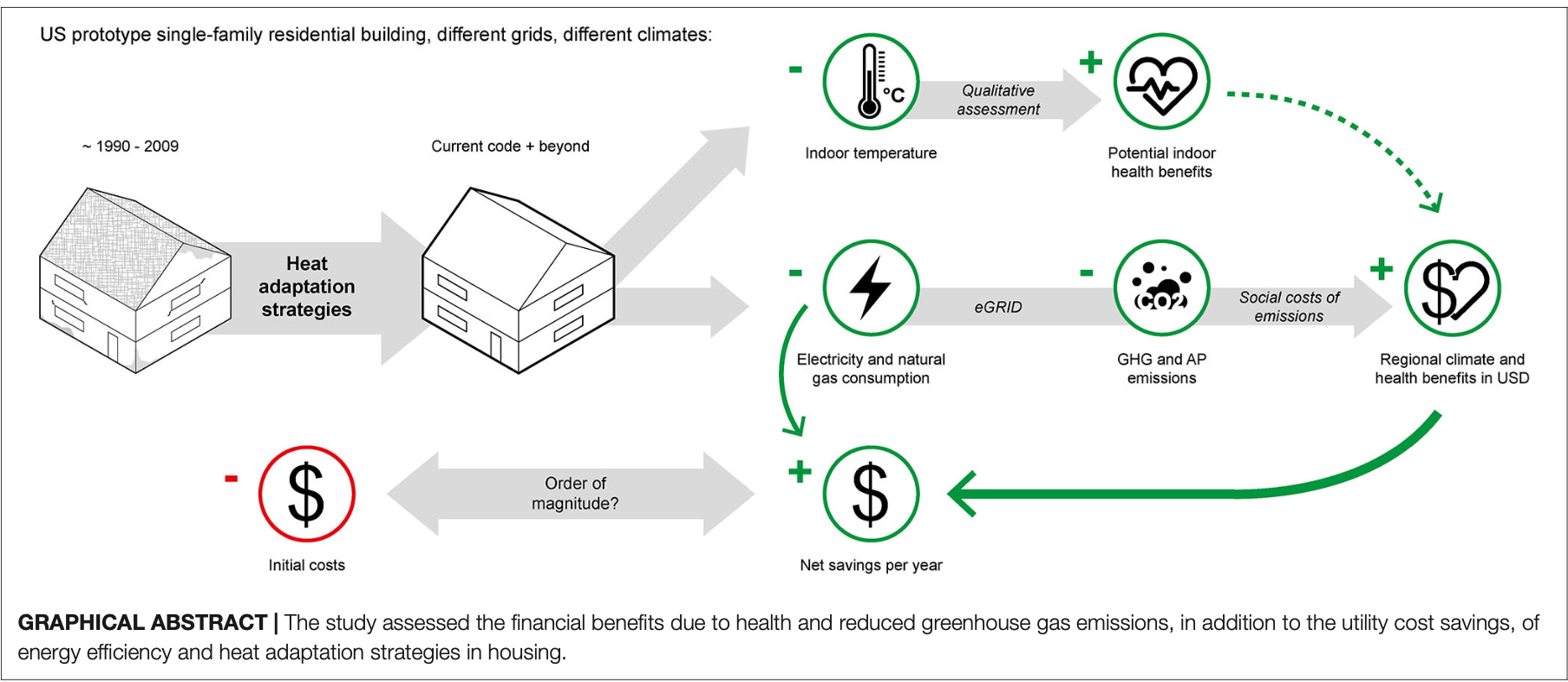Recent research
Mandated rest breaks and warm season occupational injuries and illnesses in Dallas County, TX construction workers
L.H. Schinasi, A.A. Williams, A. Schnake-Mahl. (2024). Mandated rest breaks and warm season occupational injuries and illnesses in Dallas County, TX construction workers: A quasi-experimental, comparative interrupted time series study. Journal of Occupational and Environmental Medicine.
Objective: We estimated associations of a rest break ordinance, implemented for construction workers in Dallas, Texas in 2016, with workplace injuries and illnesses. Methods: We used workers’ compensation claims data to com- pare changes in rates of injuries and illnesses among Dallas County, Texas con- struction (ie, “treated”) workers with changes in untreated workers, before (2013–2015) and after (2016–2018) a rest break ordinance was implemented. Results: Immediately after the ordinance was implemented, rates of injuries/ illnesses among treated workers were modestly lower than in comparison workers (rate ratio comparing postmandate vs premandate rates, treated vs com- parison workers: 0.89, 95% confidence interval: 0.72–1.11). Postordinance ver- sus preordinance slope trends were similar in the treated versus the comparison group. Conclusions: Ten-minute rest breaks were associated with modestly lower rates of workplace injury/illnesses. More comprehensive standards may be needed for protection.
The influence of heat on daily police, medical, and fire dispatches in Boston, MA: Relative risk and time-series analyses
Williams, A.A., J.G. Allen, P.J. Catalano, J.J. Buonocore, and J.D. Spengler. (2020). The influence of heat on daily police, medical, and fire dispatches in Boston, MA: Relative risk and time-series analyses. American Journal of Public Health, 110: 662-668.
Objectives. To examine the impact of extreme heat on emergency services in Boston, MA.
Methods. We conducted relative risk and time series analyses of 911 dispatches of the Boston Police Department (BPD), Boston Emergency Medical Services (BEMS), and Boston Fire Department (BFD) from November 2010 to April 2014 to assess the impact of extreme heat on emergency services.
Results. During the warm season, there were 2% (95% confidence interval [CI] = 0%, 5%) more BPD dispatches, 9% (95% CI = 7%, 12%) more BEMS dispatches, and 10% (95% CI = 5%, 15%) more BFD dispatches on days when the maximum temperature was 90°F or higher, which remained consistent when we considered multiple days of heat. A 10°F increase in daily maximum temperature, from 80° to 90°F, resulted in 1.016, 1.017, and 1.002 times the expected number of daily BPD, BEMS, and BFD dispatch calls, on average, after adjustment for other predictors.
Conclusions. The burden of extreme heat on local emergency medical and police services may be agency-wide, and impacts on fire departments have not been previously documented.
Public Health Implications. It is important to account for the societal burden of ex- treme heat impacts to most effectively inform climate change adaptation strategies and planning.
Traumatic Workplace Injuries: A Cross-Sectional Analysis of OSHA Severe Injury Reports, Including the Impacts of Seasonality and COVID-19 from 2015-2022
A. A. Williams and J. Marc*. (2024). Traumatic Workplace Injuries: A Cross-Sectional Analysis of OSHA Severe Injury Reports, Including the Impacts of Seasonality and COVID-19 from 2015-2022. Journal of Safety Research: 91.
Introduction: Millions of workers are injured on the job each year. Updated injury reporting regulations from the Occupational Safety and Health Administration (OSHA) in 2014 have resulted in publicly available data on reported severe injuries. Methods: OSHA severe injury reports (SIRs) were analyzed from 2015 to 2022. Severe injury rates were calculated using total employment estimates by industry and state to characterize the distri- bution of SIRs. Secondary analyses examined how SIRs differed seasonally, as well as before and after the start of the COVID-19 pandemic. Results: There were 83,338 severe workplace injuries reported across the 29 states that are under federal OSHA coverage. Manufacturing (375.98 per 100,000 workers) and Utilities (277.21 per 100,000 workers) had the highest rates of severe injuries. Despite summertime peaks in SIRs, there were not significant differences between seasons when examining SIRs by industry (p = 0.9763) or various injury factors. 1,846 of the SIRs were heat-related, and Utilities had the highest rate of heat-related severe injuries (13.34 per 100,000 workers). There was a statistically significant difference in the average injury rate when comparing pre- and post-COVID-19 periods (p < 0.001), which was statistically similar across all industries (p = 0.8143). Conclusions: Although several prior studies have examined the OSHA SIR data, this is the first known analysis of SIRs in relation to state- and industry-specific employment data. Despite the lack of a significant seasonality in SIRs, many industries seem to be impacted by heat-related injuries across all states. The number and rate of SIRs declined during COVID-19 similarly across all industries, with some industries maintaining low injury reporting rates through 2022. Practical Application: Findings of which industries and states may be experiencing a disproportionate burden of SIRs, including heat-related injuries, can inform injury prevention efforts. Additional work is needed to disentangle the drivers behind decreases in reported severe injuries during the COVID-19 pandemic.
The influence of extreme heat on police and fire department services in 23 U.S. cities
Williams, A.A., McDonogh‐Wong, L., and Spengler, J.D. (2020). The influence of extreme heat on police and fire department services in 23 U.S. cities. GeoHealth, 4(11), e2020GH000282.
Extreme heat has previously been found to increase violent crime, medical emergencies, and traffic accidents. However, the relationship between heat and increased demand for overall police services and fire department incidents is less understood. This study looks at 23 cities across the United States that vary in population, geography, and climate, to see how extreme heat influences daily demand for police and fire department services. City specific analyses can directly inform community managers on how to plan for future emergency service needs. We found that on days where the temperature was at or above the 95th percentile of historical temperatures for that month, police and fire departments were significantly more likely to experience higher incident numbers than on nonhot days in 7 of 17 (police) and 11 of 14 (fire) cities. The estimated effects of daily maximum temperature, daily maximum heat index, and daily minimum temperature were nonlinear for police and fire department incidents across all cities. These findings are critical to ensuring the resilience and capacity of emergency services and emergency service workers, so they can meet the needs of their citizens as periods of extreme heat become more common.
Health and climate benefits of heat adaptation strategies in single-family residential buildings
Williams A.A., Baniassadi A., Izaga Gonzalez P., Buonocore J.J., Cedeno-Laurent J.G., and Samuelson H.W. (2020). Health and climate benefits of heat adaptation strategies in single-family residential buildings. Frontiers in Sustainable Cities, 2:561828.
As the frequency and severity of extreme heat increases with global climate change, residential buildings play a key role in defining personal temperature exposures. In recent decades, residential buildings have become the focus of energy efficiency and cost savings programs and initiatives. Residential buildings can also mitigate high indoor temperatures and heat-related health impacts, but these heat adaptation interventions have not been fully evaluated for their potential energy, climate, and health benefits. We aimed to quantify the health and climate benefits of energy and indoor temperature reductions that result from heat adaptation strategies applied to residential (specifically single-family detached built between 1990 and 2010) buildings in 10 U.S. cities. Building energy models were used to simulate energy reduction retrofits, including changing roof reflectivity, adding window overhangs, improving window properties, and roof/wall insulation, as well as the addition of shade trees and indoor phase change materials. We used the building simulation results to estimate attendant reductions in greenhouse gas (GHG) and criteria air pollution (AP) emissions from the electrical grid, and used the damage estimates to evaluate the resulting climate and health benefits. Under light and deep retrofit scenarios, respectively, we estimate that the simulated heat adaptation retrofits in this subset of relatively new buildings have the potential to yield $1.10 or $1.57 billion in direct utilities savings. There is an additional $462.9 million ($301.3–$909.9 million) or $692.8 million ($442.6 million–$1.385 billion) in climate and health benefits, due to avoided GHG and AP emissions. Put simply, the climate and health benefits may account for an additional 42–44% of the direct utility savings, on average. Climate and health benefits were generally highest for adaptations simulated in hot climates (Dallas, TX and Houston, TX) or in areas with dirtier fuel mixes (Chicago, IL and Philadelphia, PA). When climate and health savings are included, the payback periods of these interventions can decrease by nearly half. We also discuss the potential additional health benefits of reducing indoor temperatures during extreme heat. These significant savings from avoided climate and public health damages should be factored into climate change adaptation decision making by stakeholders and policymakers.
Full list of research publications:
[last updated sept 2024] [*Denotes a student mentee]
J.L. Romeiser, Z. Chen*, K. Nanavati, A.A. Williams. Predictors and patterns of complementary and integrative health therapy use among individuals with recent and non-recent cancer diagnoses: A US national cross-sectional study. Journal of Cancer Survivorship. https://link.springer.com/article/10.1007/s11764-024-01665-5.
A. A. Williams and J. Marc*. (2024). Traumatic Workplace Injuries: A Cross-Sectional Analysis of OSHA Severe Injury Reports, Including the Impacts of Seasonality and COVID-19 from 2015-2022. Journal of Safety Research: 91. https://doi.org/10.1016/j.jsr.2024.08.004.
L.H. Schinasi, A.A. Williams, A. Schnake-Mahl. (2024). Mandated rest breaks and warm season occupational injuries and illnesses in Dallas County, TX construction workers: A quasi-experimental, comparative interrupted time series study. Journal of Occupational and Environmental Medicine. DOI: 10.1097/JOM.0000000000003144.
Romeiser, J, N. Jusko,. and A.A. Williams. Emerging Trends in Information-Seeking Behavior for Alpha-gal Syndrome: An Infodemiology Study Using Time Series and Content Analysis. Journal of Medical Internet Research. 26:e49928) doi: 10.2196/49928.
Williams, A.A., McDonogh‐Wong, L., and Spengler, J.D. (2020). The influence of extreme heat on police and fire department services in 23 U.S. cities. GeoHealth, 4(11), e2020GH000282. https:// doi.org/10.1029/2020GH000282.
Williams A.A., Baniassadi A., Izaga Gonzalez P., Buonocore J.J., Cedeno-Laurent J.G., and Samuelson H.W. (2020). Health and climate benefits of heat adaptation strategies in single-family residential buildings. Frontiers in Sustainable Cities, 2:561828. doi: 10.3389/frsc.2020.561828.
Williams, A.A., J.G. Allen, P.J. Catalano, J.J. Buonocore, and J.D. Spengler. (2020). The influence of heat on daily police, medical, and fire dispatches in Boston, MA: Relative risk and time-series analyses. American Journal of Public Health, 110: 662-668. https://ajph.aphapublications.org/doi/pdf/10.2105/AJPH.2019.305563.
Williams, A.A., J.G. Allen, P.J. Catalano, and J.D. Spengler. (2020). The role of individual and small-area social and environmental factors on heat vulnerability to mortality within and outside of the home in Boston, MA. Climate, 8(2): 29. https://www.mdpi.com/2225-1154/8/2/29.
Williams, A.A., J.G. Allen, P.J. Catalano, J.D. Spengler, and J.G. Cedeno Laurent. (2019). Building vulnerability in a changing climate: Indoor temperature exposures and health symptoms in older adults living in public housing during an extreme heat event in Cambridge, MA. International Journal of Environmental Research and Public Health, 16, 2373. https://doi.org/10.3390/ijerph16132373.
Buonocore, J.J., E.J. Hughes, D.R. Michanowicz, J. Heo, J.G. Allen, and A.A. Williams. (2019). Climate and health benefits of increasing renewable energy deployment in the United States. Environmental Research Letters, 14: 114010. https://iopscience.iop.org/article/10.1088/1748-9326/ab49bc/meta.
Cedeno Laurent J.G., A.A. Williams, Y. Oulhote, A. Zanobetti, J.G. Allen, J.D. Spengler. (2018). Reduced cognitive function during a heat wave among residents of non-air-conditioned buildings: An observational study of young adults in the summer of 2016. Plos Medicine, 15(7), e1002605. https://doi.org/10.1371/journal.pmed.1002605.
Cedeno Laurent J.G., A.A. Williams, P. MacNaughton, X. Cao, E. Eitland, J.D. Spengler, J.G. Allen. (2018). Building evidence for health: Green buildings, current science, and future challenges. Annual Review of Public Health, 39: 291-308. https://www.annualreviews.org/doi/full/10.1146/annurev-publhealth-031816-044420.
A.A. Williams, N.F. Laird. (2018). Weather and eared grebe winter migration near the Great Salt Lake, Utah. International Journal of Biometeorology, 62(3): 433-447. doi: 10.1007/s00484-017-1452-8.


